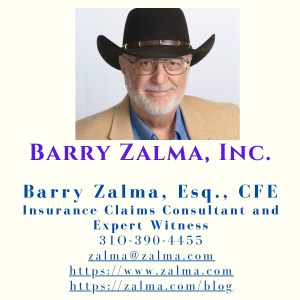Equity Requires Fairness

Post 4705
See the full video at https://rumble.com/v45tgrx-equitable-indemnity-only-available-to-one-without-fault.html and at https://youtu.be/Pm94OcqWFoU
In Martha M. Fountain and Curtis Fountain v. Fred’s, Inc. and Wildevco, LLC v. Tippins-Polk Construction, Inc. and Rhoad’s Excavating Services, LLC, of whom Tippins-Polk Construction, Inc. is the Petitioner, Appellate Case No. 2020-000651, Opinion No. 28086, 436 S.C. 40, 871 S.E.2d 166, Supreme Court of South Carolina (Filed March 2, 2022) established the requirements for obtaining equitable indemnity.
FACTS
Respondent Fred’s was a Tennessee corporation that operated a chain of discount general merchandise stores in several states, including South Carolina.
In April 2005, Wildevco entered into a contract with general contractor Tippins-Polk for the construction of the Fred’s store and adjoining strip center. The construction contract between Wildevco and Tippins-Polk included drawings prepared by an architect, as well as site plans prepared by an engineer. The contract specifically stated that Tippins-Polk was responsible for “All Site Work,” including “[g]rading, concrete curbing, utilities & paving [p]er site plans.”
Wildevco provided Tippins-Polk with two sets of construction drawings—the architectural drawings, which established the design elements including the sidewalk surrounding the store, and the site plans, which controlled the grading, elevations, pavement, and underground utilities. Tippins-Polk constructed the entrance to have a curb ramp at the entrance door. In front of the door, the ramp was flush with the parking lot, and on either side, it sloped upward to adjoin the rest of the curbing surrounding the building. Fred’s opened the Williston store in October 2005.
If an inspection had taken place, it would have been visible to the naked eye that an elevation change in the sidewalk existed and was not painted yellow.
Five years after the Fred’s store opened, Ms. Fountain hit her head and hand on the glass door and fell to her knees. In May 2010, Ms. Fountain and her husband filed a premises liability suit against Fred’s and Wildevco. Ms. Fountain sought to recover her medical expenses and lost wages, and her husband filed a loss of consortium claim. The Fountains did not pursue a construction defect claim against Tippins-Polk.
The case was set for a date certain trial in March 2016. On the eve of trial, Wildevco and Fred’s settled with the Fountains for $290,000, with Wildevco paying $250,000 and Fred’s paying $40,000.
The general theory of the third-party claim was that Tippins-Polk deviated from the site plans and improperly constructed the entrance curbing, which was the sole proximate cause of Ms. Fountain’s injuries. As to the relevant elements of equitable indemnification, the trial court found a special relationship existed between Fred’s and Tippins-Polk.
EQUITABLE INDEMNIFICATION
South Carolina has long recognized the principle of equitable indemnification. Indemnity is that form of compensation in which a first party is liable to pay a second party for a loss or damage the second party incurs to a third party.
Tippins-Polk argued that it was error to affirm the finding that Wildevco and Fred’s were without fault.
Special Relationship
As a matter of equity, a party is entitled to indemnity if the relation between the parties is such that either in law or in equity there is an obligation on one party to indemnify the other, as where one person is exposed to liability by the wrongful act of another in which he does not join. The trial court and court of appeals found the connection between Fred’s and Tippins-Polk was established because Tippins-Polk knew the commercial space it constructed would be leased to Fred’s and open to the public and because Tippins-Polk had been the general contractor in several other unrelated construction projects for Fred’s stores.
Without Fault
A party may be entitled to equitable indemnification only if no personal negligence of his own has joined in causing the injury. Equitable indemnity cases involve a fact pattern in which the first party is at fault, but the second party is not. If the second party is also at fault, he comes to court without equity and has no right to indemnity.
The owner of property owes to an invitee or business visitor the duty of exercising reasonable or ordinary care for his safety and is liable for injuries resulting from the breach of such duty. As a matter of law, both Fred’s and Wildevco owed a duty of care to Ms. Fountain, as an invitee, to keep the premises reasonably safe and warn of any unreasonable dangers that could not be remedied. Indeed, it is in this context that Fred’s and Wildevco were sued for their own independent negligence — not vicariously for the negligence of Tippins-Polk. When speaking of proximate cause, courts are not referring to the “sole cause.” In order to establish actionable negligence, the plaintiff is required only to prove that the negligence on the part of the defendant was at least one of the proximate, concurring causes of his injury.
To be entitled to equitable indemnity on their crossclaim against Tippins-Polk, Fred’s and Wildevco were required to show not just that Tippins-Polk’s construction of the ramp was a proximate cause of Ms. Fountain’s injuries but also that Respondents’ failure to warn of or remedy the unsafe condition was not a proximate cause.
Since there was no evidence in the record that either Fred’s or Wildevco warned of or attempted to remedy the trip hazard identified by their own safety expert, despite the condition existing for almost five years before the accident occurred. In sum, Fred’s and Wildevco failed to establish they were without fault in the Fountains’ premises liability action.
Because the Supreme Court found Respondents failed to establish they were without fault in the underlying action, the trial court verdict was reversed.
The Supreme Court of South Carolina understood that equity requires fairness. No one is entitled to equitable indemnity if it would be unfair to allow them to recover when they are unable to prove that those seeking indemnity were without fault. Since they could not establish that they were without fault they had no right to indemnity.
 (c) 2024 Barry Zalma & ClaimSchool, Inc.
(c) 2024 Barry Zalma & ClaimSchool, Inc.
Please tell your friends and colleagues about this blog and the videos and let them subscribe to the blog and the videos.
Subscribe to my substack at https://barryzalma.substack.com/publish/post/107007808
Go to Newsbreak.com https://www.newsbreak.com/@c/1653419?s=01
Go to the podcast Zalma On Insurance at https://podcasters.spotify.com/pod/show/barry-zalma/support; Go to Barry Zalma videos at Rumble.com at https://rumble.com/c/c-262921; Go to Barry Zalma on YouTube- https://www.youtube.com/channel/UCysiZklEtxZsSF9DfC0Expg; Go to the Insurance Claims Library – http://zalma.com/blog/insurance-claims-library.
Like this:
Loading…







